Abstract
Based on a formal proof that justifies the search for generative grammars in the study of gene regulation, a linguistic formalization of an exhaustive data base of Escherichia coli sigma 70 promoters and their regulatory binding sites has been initiated. The grammar presented here generates all the arrays of the collection plus those that are predicted as consistent with the principles of regulation of sigma 70 promoters. "Systems of regulation," sets of regulatory sites that collaborate in a mechanism of regulation, are represented by means of syntactic categories. A small set of phrase structure rules restricted by an X-bar principle and by a hierarchical, c-command relation generates a representation of arrays of sites of regulation where the selection of the protein(s) identifying the system(s) of regulation occurs. Based on the features of the proteins, optional duplicated proximal and remote sites are generated by means of transformational rules. Consistency with the data, the predictions that the grammar generates, and important similarities and differences with some aspects of the generative theory of natural language are discussed.
Full text
PDF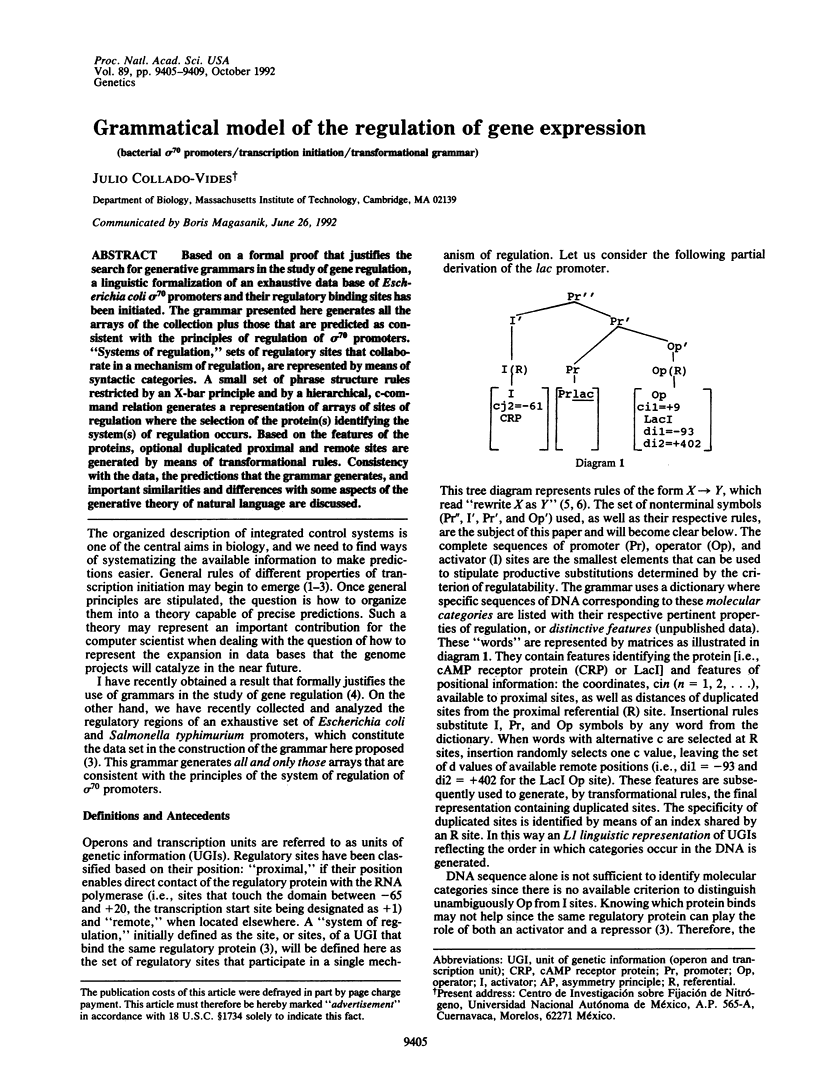
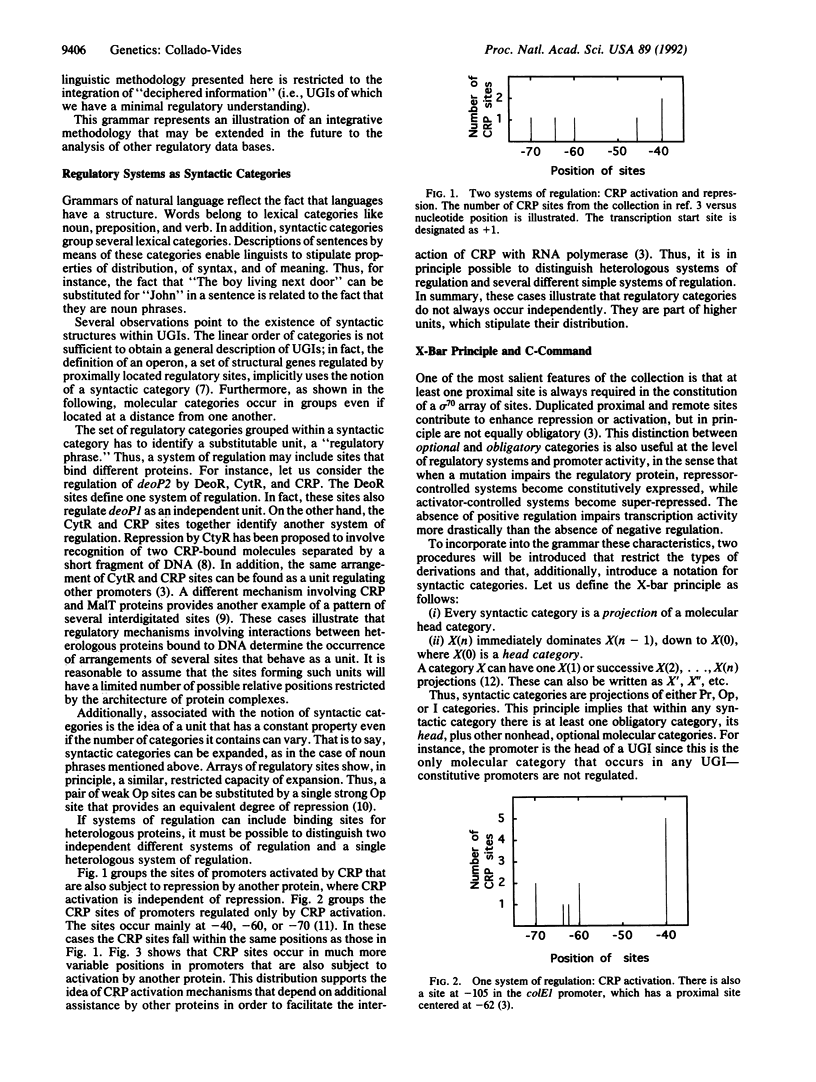
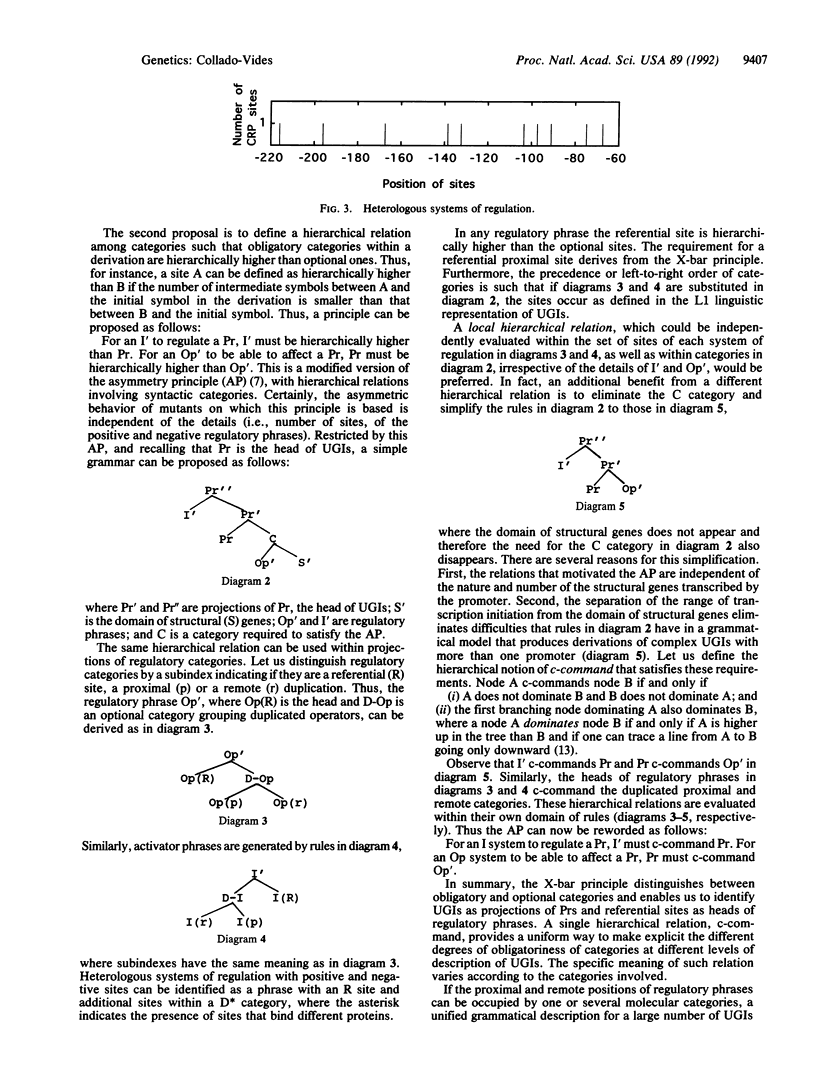
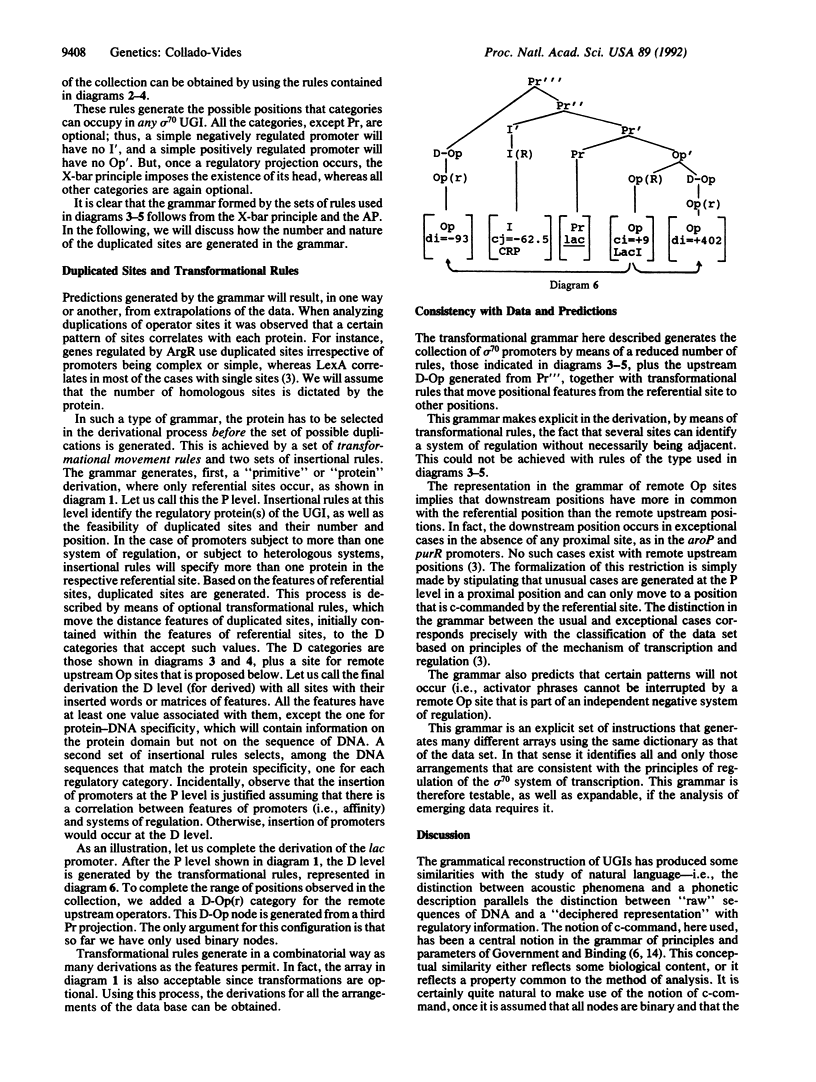
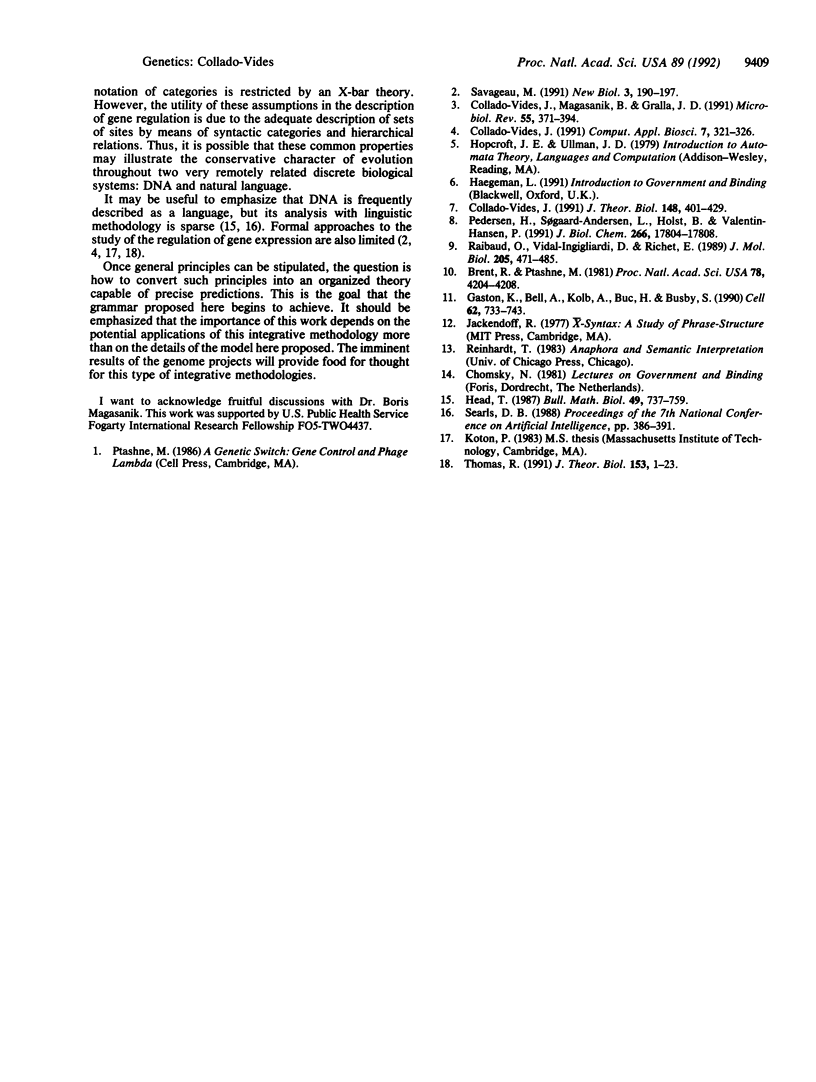
Selected References
These references are in PubMed. This may not be the complete list of references from this article.
- Brent R., Ptashne M. Mechanism of action of the lexA gene product. Proc Natl Acad Sci U S A. 1981 Jul;78(7):4204–4208. doi: 10.1073/pnas.78.7.4204. [DOI] [PMC free article] [PubMed] [Google Scholar]
- Collado-Vides J. A syntactic representation of units of genetic information--a syntax of units of genetic information. J Theor Biol. 1991 Feb 7;148(3):401–429. doi: 10.1016/s0022-5193(05)80245-0. [DOI] [PubMed] [Google Scholar]
- Collado-Vides J., Magasanik B., Gralla J. D. Control site location and transcriptional regulation in Escherichia coli. Microbiol Rev. 1991 Sep;55(3):371–394. doi: 10.1128/mr.55.3.371-394.1991. [DOI] [PMC free article] [PubMed] [Google Scholar]
- Collado-Vides J. The search for a grammatical theory of gene regulation is formally justified by showing the inadequacy of context-free grammars. Comput Appl Biosci. 1991 Jul;7(3):321–326. doi: 10.1093/bioinformatics/7.3.321. [DOI] [PubMed] [Google Scholar]
- Gaston K., Bell A., Kolb A., Buc H., Busby S. Stringent spacing requirements for transcription activation by CRP. Cell. 1990 Aug 24;62(4):733–743. doi: 10.1016/0092-8674(90)90118-x. [DOI] [PubMed] [Google Scholar]
- Head T. Formal language theory and DNA: an analysis of the generative capacity of specific recombinant behaviors. Bull Math Biol. 1987;49(6):737–759. doi: 10.1007/BF02481771. [DOI] [PubMed] [Google Scholar]
- Pedersen H., Søgaard-Andersen L., Holst B., Valentin-Hansen P. Heterologous cooperativity in Escherichia coli. The CytR repressor both contacts DNA and the cAMP receptor protein when binding to the deoP2 promoter. J Biol Chem. 1991 Sep 25;266(27):17804–17808. [PubMed] [Google Scholar]
- Raibaud O., Vidal-Ingigliardi D., Richet E. A complex nucleoprotein structure involved in activation of transcription of two divergent Escherichia coli promoters. J Mol Biol. 1989 Feb 5;205(3):471–485. doi: 10.1016/0022-2836(89)90218-0. [DOI] [PubMed] [Google Scholar]
- Savageau M. A. Reconstructionist molecular biology. New Biol. 1991 Feb;3(2):190–197. [PubMed] [Google Scholar]


